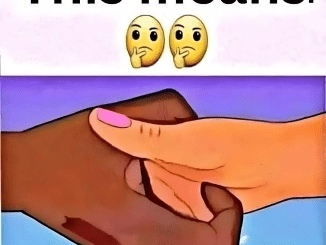Here’s a fun brain teaser that’s driving the internet wild:
50 + 50 – 25 × 0 + 2 + 2 = ?
It looks easy, right? A few basic numbers, a little addition, a little subtraction, maybe a bit of multiplication. But here’s the catch: people are getting wildly different answers. Some say 4. Others swear it’s over 100. And many just give up halfway.
So what makes this problem so confusing? Let’s dive in.
Why This Puzzle Trips People Up

The reason so many people get the wrong answer isn’t because of poor math skills—it’s because they forget one of the most important rules in basic math: the order of operations.
When solving equations, we don’t just go from left to right like reading a book. There’s a sequence we need to follow to get the correct answer. That sequence is often remembered using the acronym PEMDAS (or BODMAS in other parts of the world):
- P – Parentheses
- E – Exponents
- MD – Multiplication & Division (from left to right)
- AS – Addition & Subtraction (from left to right)
Skipping this rule or getting the order wrong is why so many answers go off track.
Common Mistake Most People Make
A lot of folks see 50 + 50 = 100, then subtract 25, getting 75, multiply that by 0 (getting 0), and then add 2 + 2 to get 4.
That logic seems okay—until you remember that multiplication comes before subtraction.
So that 25 × 0? It has to be solved before doing the subtraction. Missing that one small detail changes everything.
Video : Top Riddles to See If You Have a Genius IQ!
Let’s Solve It Step by Step
Here’s the expression again:
50 + 50 – 25 × 0 + 2 + 2
Step 1: Handle Multiplication First
The only multiplication here is 25 × 0, which equals 0.
Now the expression becomes:
50 + 50 – 0 + 2 + 2
Step 2: Solve Left to Right
Now that there’s no multiplication left, we go from left to right:
50 + 50 = 100
100 – 0 = 100
100 + 2 = 102
102 + 2 = 104
So the final result is 104.

What Can We Learn From This?
This equation teaches more than just math—it teaches how attention to detail and logic matter. You don’t need a calculator for problems like this. What you need is focus and a solid understanding of foundational rules.
These puzzles also serve as a reminder that rushing through a problem often leads to the wrong answer. Even when the math seems basic, the trick is often hiding in plain sight.
Test Your Friends—See Who Gets It Right
Now that you know how to solve it correctly, challenge your friends. Post the problem on social media, send it in a group chat, or ask your coworkers during lunch. Watch how many different answers come flying in.
Then, break it down for them like you just learned—and enjoy their reactions when they realize the tiny mistake they made.
Why You Should Try More Puzzles Like This
Beyond just being fun, puzzles like this one help sharpen your brain. They train you to slow down, think critically, and pay attention to patterns and rules. And best of all—they can be done anywhere, anytime, with no equipment needed.
Video : Math Puzzles and Math Riddles: The most clever solutions to insanely difficult math problems.
Try making it a daily habit to solve one riddle or logic puzzle a day. You’ll be amazed at how your concentration, patience, and problem-solving skills improve.
Conclusion: It’s Not Just a Math Problem—It’s a Thinking Game
This riddle may look simple, but it’s designed to make you think twice. And if you solved it correctly, congrats! You’ve proven that you don’t just do math—you understand it.
If not, don’t worry. The beauty of puzzles is that they teach us how to get better each time.
So, next time you see a simple-looking question, pause. Think. And trust your brain—not the calculator.
Now go ahead—share this challenge and see who else is up for it!


